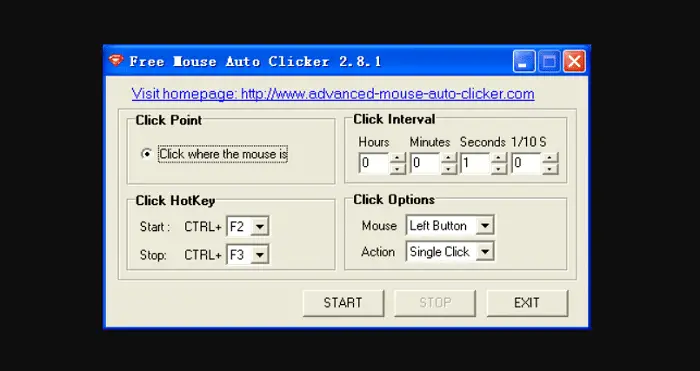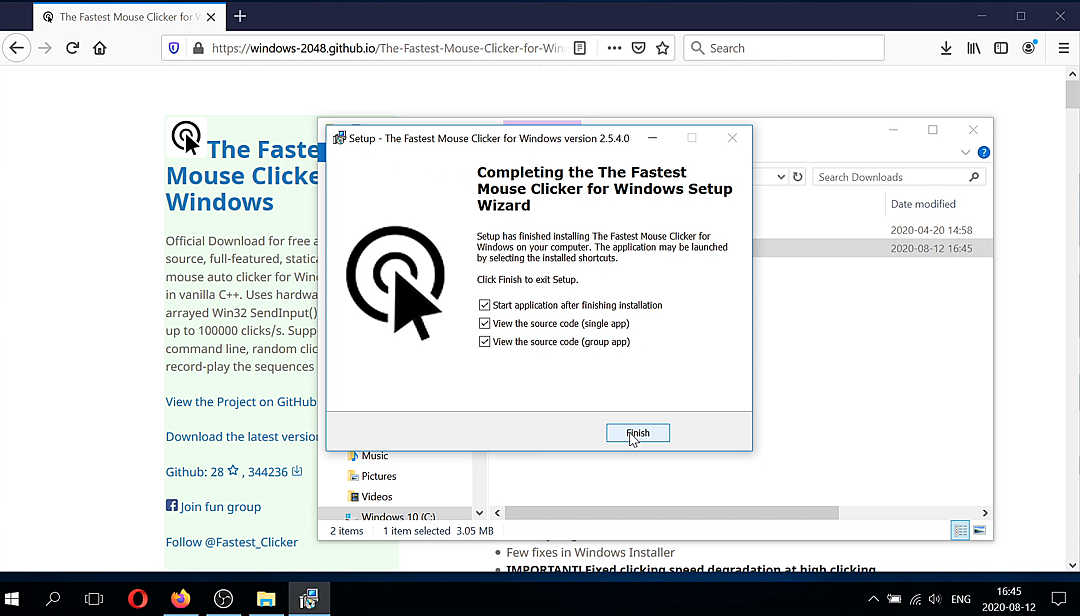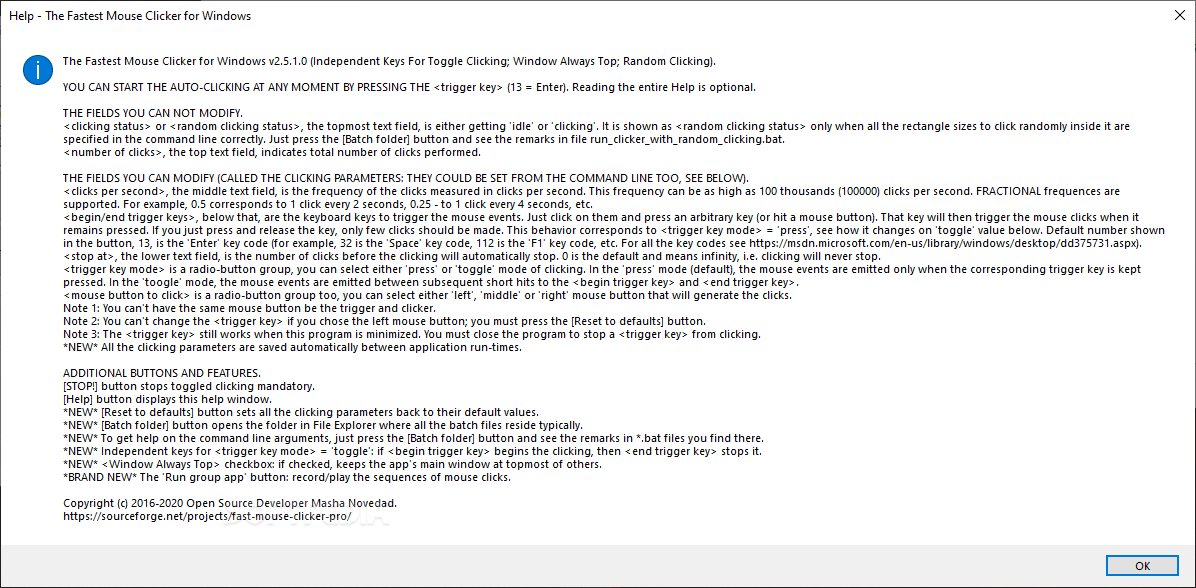

- #Windows intel fastest mouse clicker serial
- #Windows intel fastest mouse clicker drivers
- #Windows intel fastest mouse clicker driver
- #Windows intel fastest mouse clicker Pc

I’d call this “a hack.” (One that could open doors to others’ learning about CPUs). Yet, it turns out the 486 works at TTL levels, has a pretty standard address/data interface, can run down to very slow (breadboardable!) clock speeds, could even work with all the same support components one might use in an 8-bit homebrew system… only a tiny bit of glue logic to drop it in place of an 8080 or 6502.


And, looking at all the CPU-specific and architecture-specific high pincount surfacemount low voltage high-clock-frequency support components on a 486 motherboard, it might almost seem impossible to build a custom computer with a 486. CPUs certainly were no longer being designed with switch-panels in mind. So Who would think of a 486 when thinking of building such a system? By the time 486’s came into being, practically no one was making custom system architectures anymore. Those CPUs, and a couple CPU-generations thereafter, were designed at least in part with that sort of use-case in-mind. But thousands of such systems, most completely unique, were being built in garages, bedrooms, etc. This is great: the seeming resurgence these days in designing custom architecture breadboard/”trainer-board”/switch-panel-interfaced computers folk doing-so like they did in the “Wild West of computing”, learning as they go…īut almost exclusively, still, with CPUs that were, frankly, designed in the era where such things were commonplace: The Apple I being, obviously, the most well-known.
#Windows intel fastest mouse clicker Pc
Use one of the smaller pitch pin headers because 0.1″ would be too large for the minimum size possible for the main board.Īll these commontaters talking about PC systems… What would be a luxury option is a 98 pin header on one edge to plug in an ISA slot adapter or peripherals made specifically for it like a soundcard or I/O for controlling relays or reading a bunch of sensors.
#Windows intel fastest mouse clicker driver
Boards with built in peripherals have the UMA so full and haphazardly allocated that even if there’s enough total free UMA it all in pieces too small for any EMS driver to remap.Īn 80286 version would be good for when someone needs a little more power. I have a ProLight PLM 2000 mill that’s needing a bare bones basic 8088 or 80286 PC with a ton of EMS RAM but I can’t find anything that has enough free space in the Upper Memory Area for EMS to work. What such a board would be ideal for is a replacement for many 1981 to early 90’s CNC and other machine control system replacement. Oh yeah, build in Gotek floppy emulation for one of the USB ports and it’ll also need XT-IDE support on one of the USB ports (ideally with hot swap capability) so it won’t need mass storage drivers.
#Windows intel fastest mouse clicker serial
A couple of serial ports that can be switched between RS232 and RS485 and an NE2000 compatible 10 megabit Ethernet port and it’ll be perfect.
#Windows intel fastest mouse clicker drivers
Give it at least 6 USB 2.0 ports with legacy keyboard and mouse support so it needs no drivers for USB keyboard and mouse. I’m still wanting the equivalent of an IBM PC/XT SBC with 640K conventional RAM and maxed out on other RAM as hardware LIM 4.0 EMS. Posted in Retrocomputing Tagged 486, 80486, breadboard, i486 Post navigation The 486 may be on life support here in 2023, but that doesn’t mean it can’t still receive some love. It’s fascinating to learn about how the 32-bit 486 handles its interfacing and deals with four bytes at once, and we’re very much looking forward to seeing this project play out. The eventual aim is to have a simple but fully functional breadboard computer, so he’s starting with logic to decode the 32-bit bus on the 486 into the 8-bit bus he’s going to use. A 486 running NOPs may produce a pretty light show, but as he starts to show in the second video, it’s capable of more. The first one introduces the project and shows the basic set-up. So far there are two videos in the series, which we’ve placed below the break. It needs a breakout board to gain access to its various lines, but beyond that it can be interfaced to in a very similar way to those earlier chips. is leading the way on this, by making a breadboard computer using an 80486DX.Ī 1990-era 32-bit desktop CPU seems unpromising territory for this application, but its architecture is surprisingly accessible. Usually these machines feature a familiar 8-bit processor such as a 6502 or a Z80 because of their breadboard-friendly DIP packages, but there is surprisingly little reason why some of the more recent silicon can’t be treated in the same way. Ever since the 1970s, a frequent project has been to take a microprocessor and construct a computer system on a breadboard or stripboard.


 0 kommentar(er)
0 kommentar(er)
